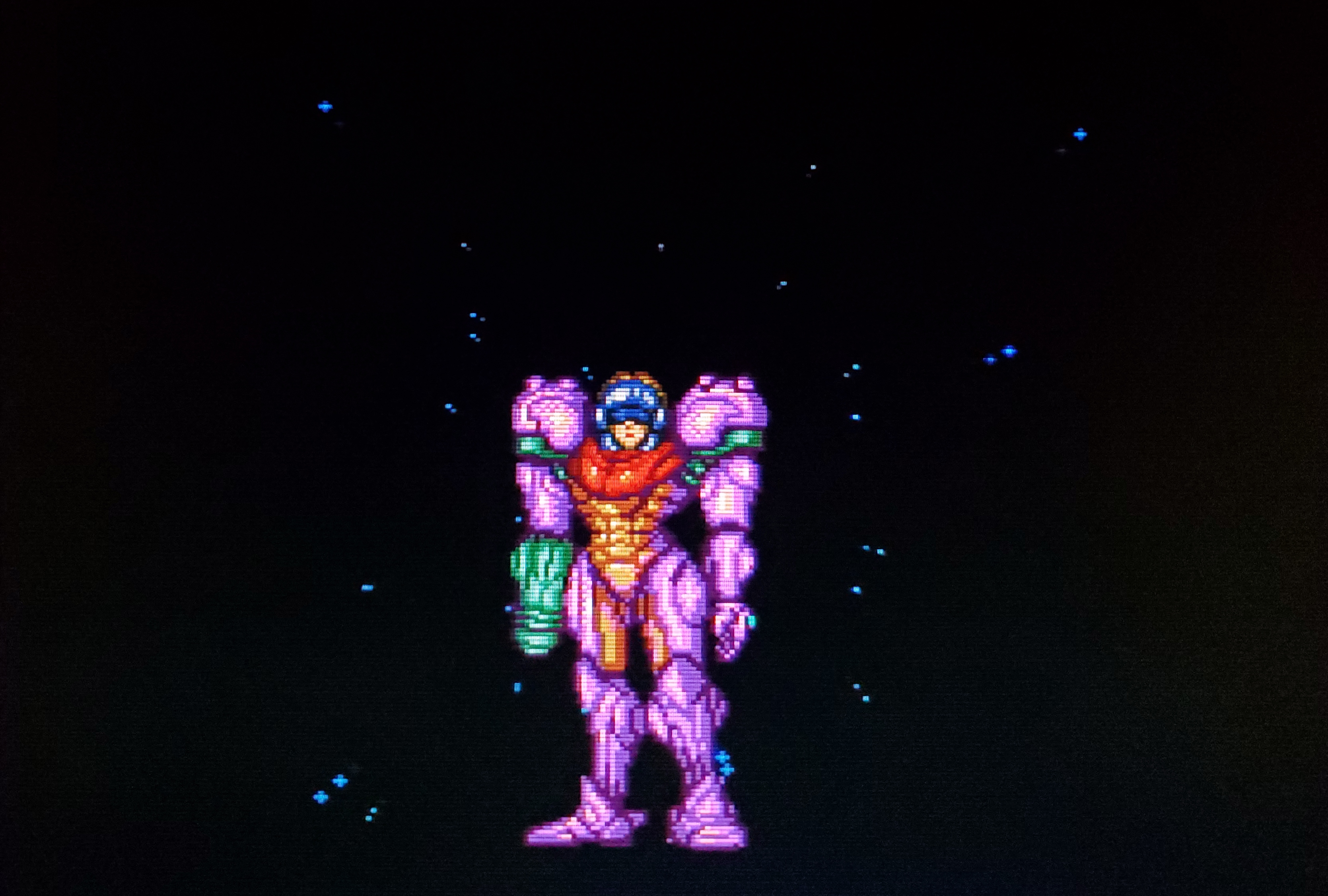
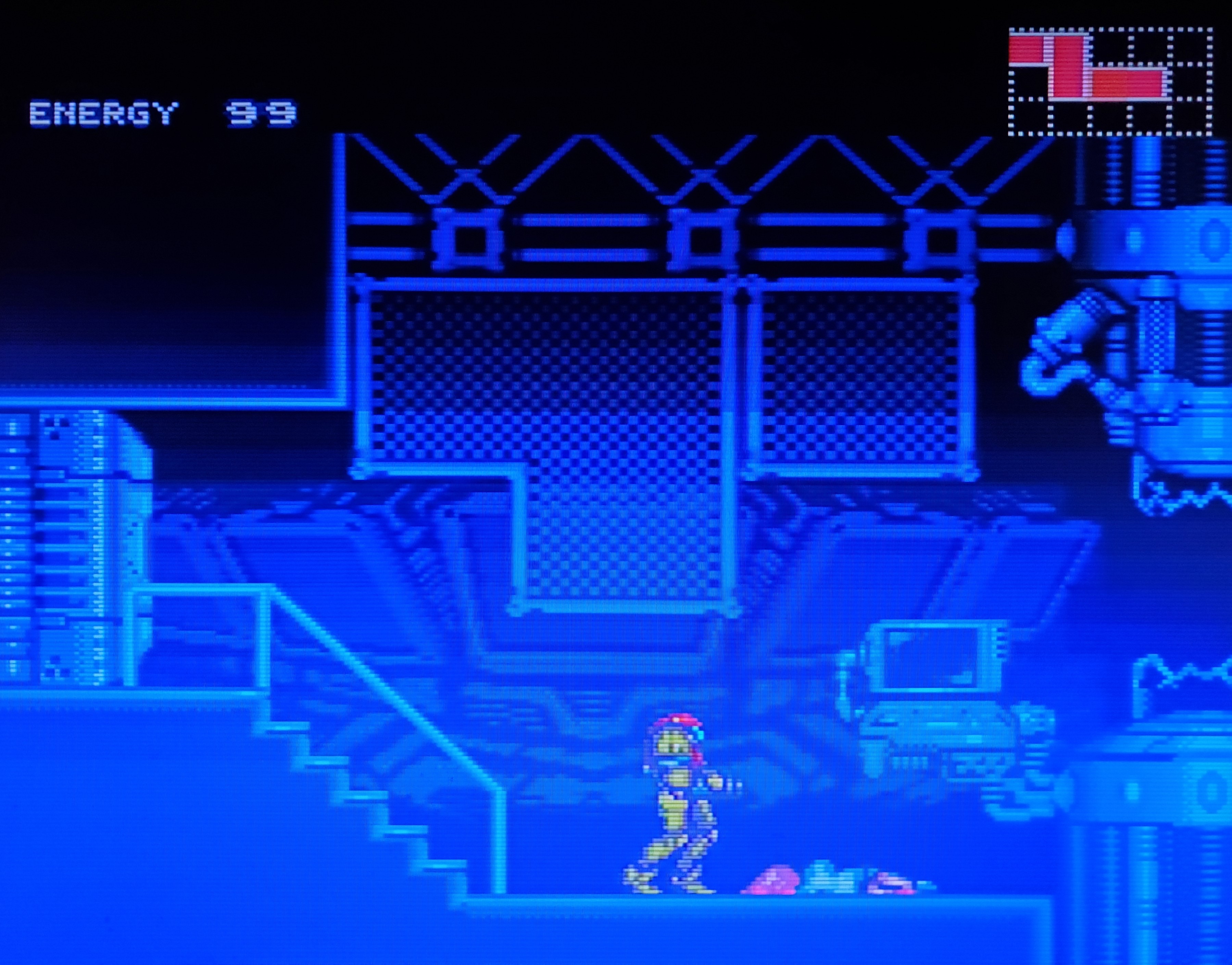
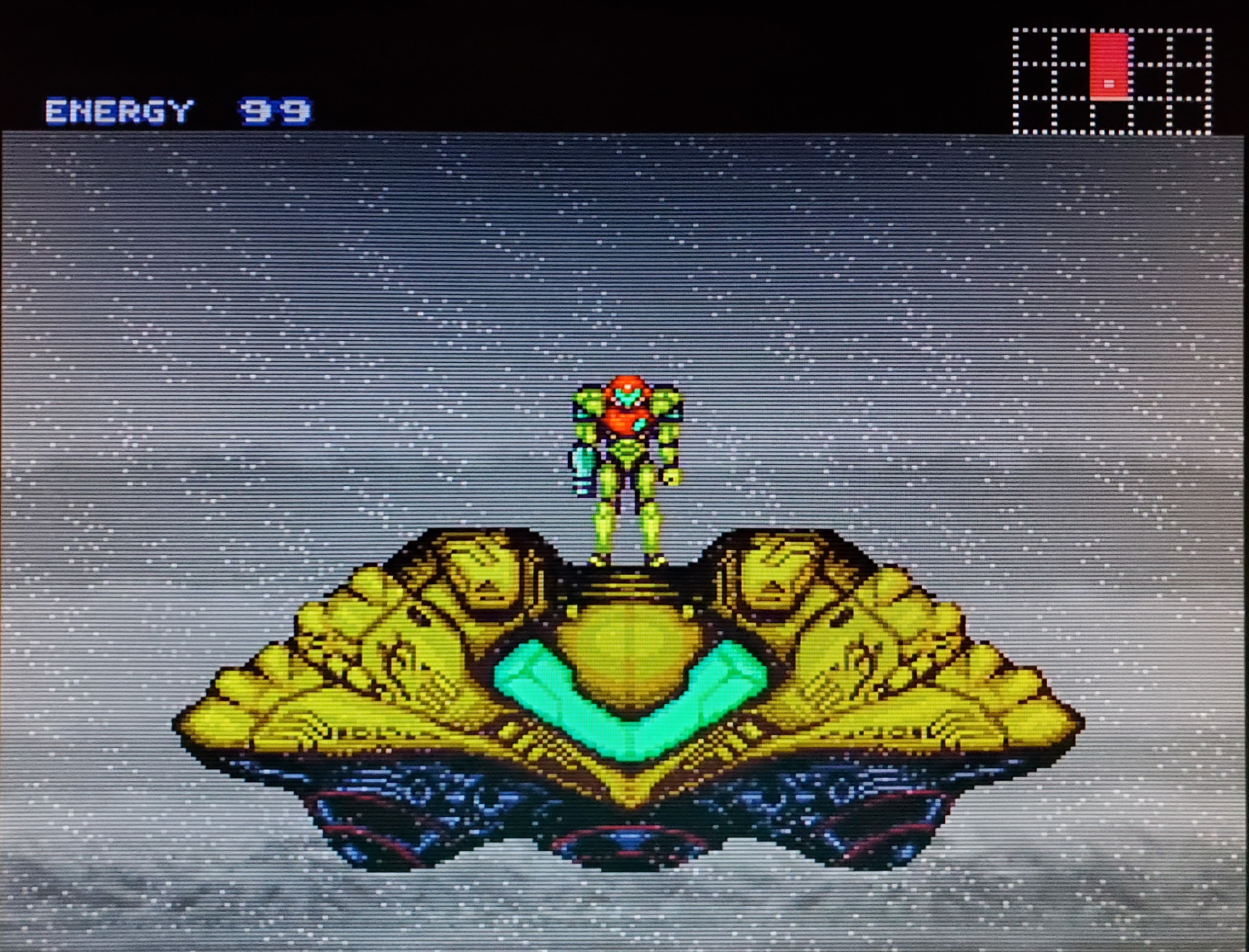
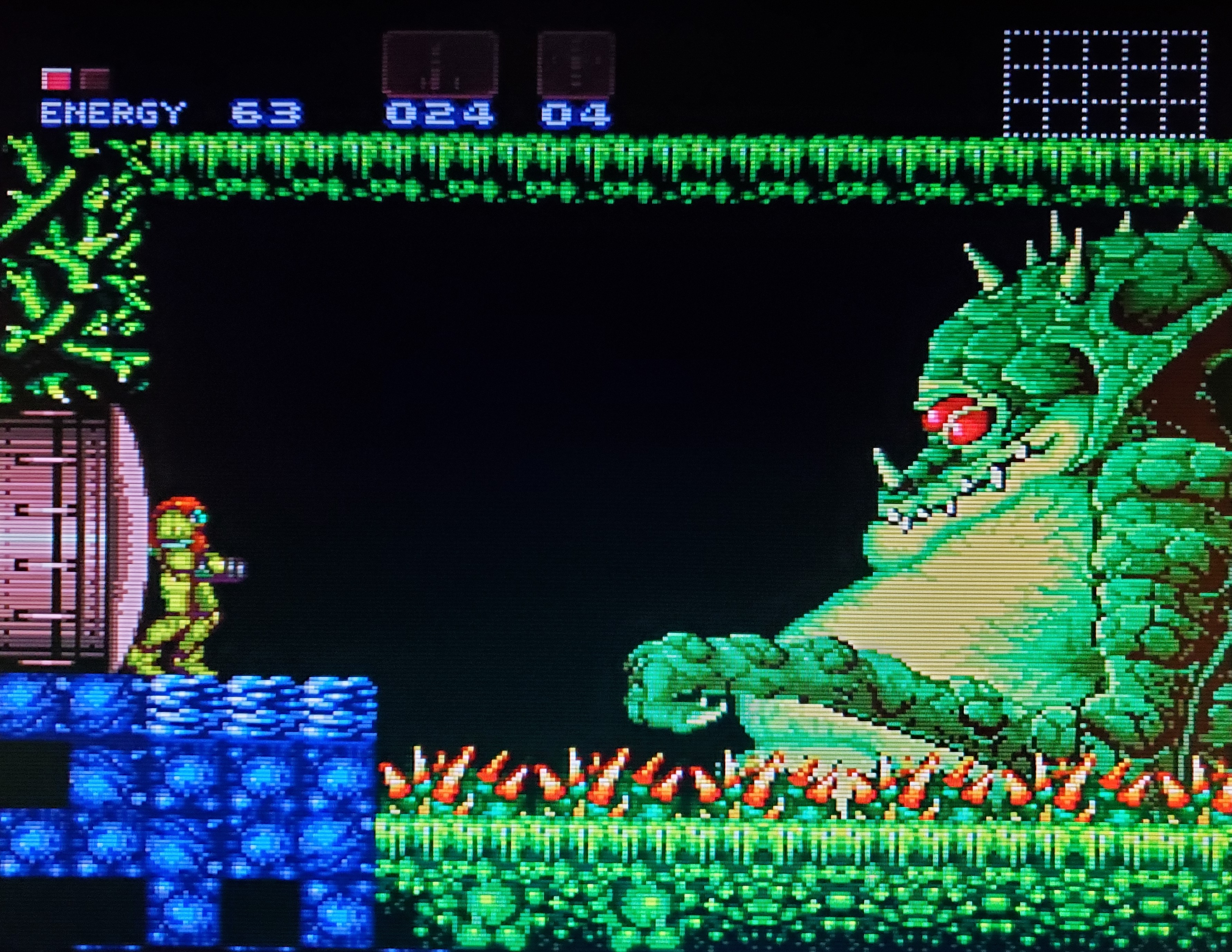
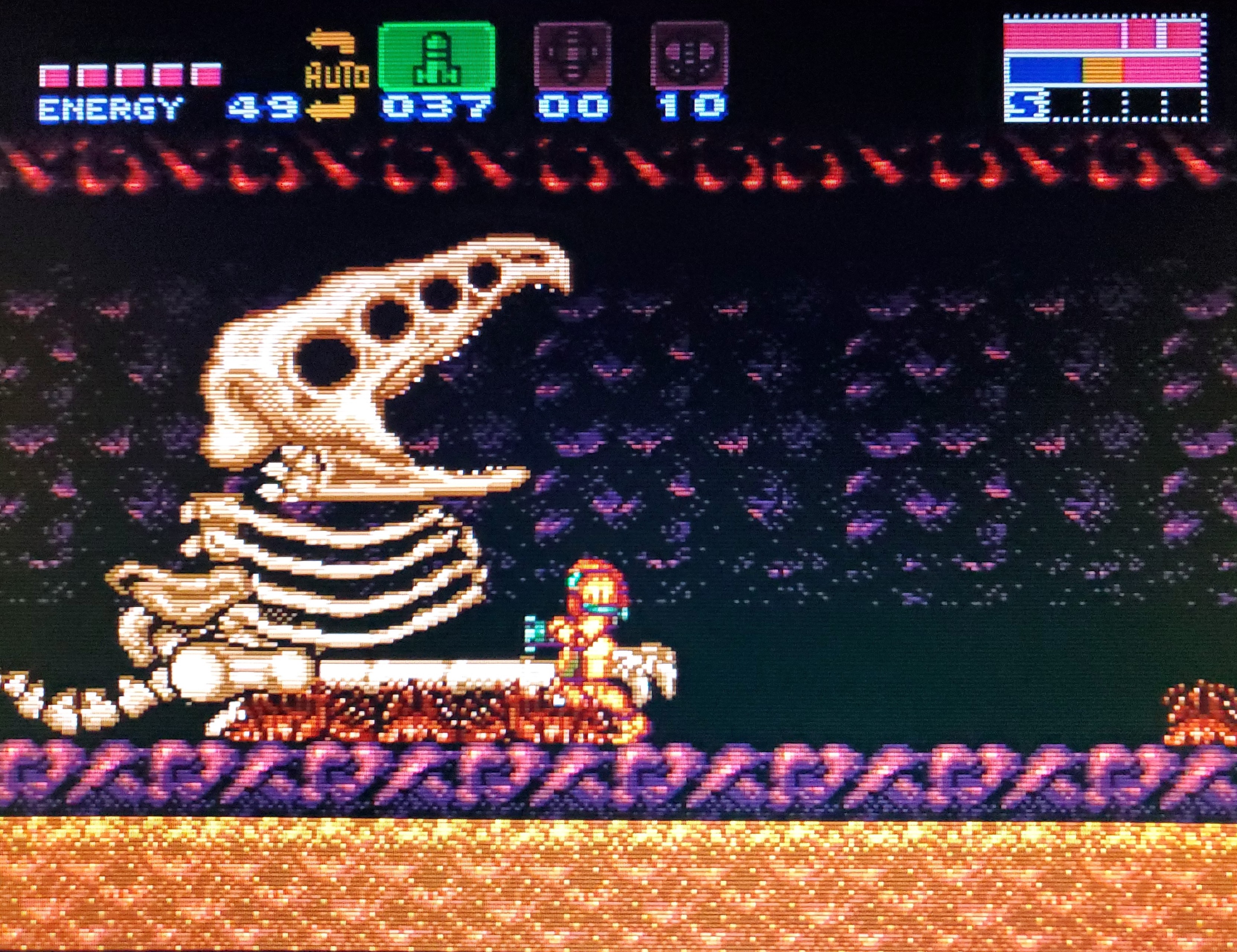
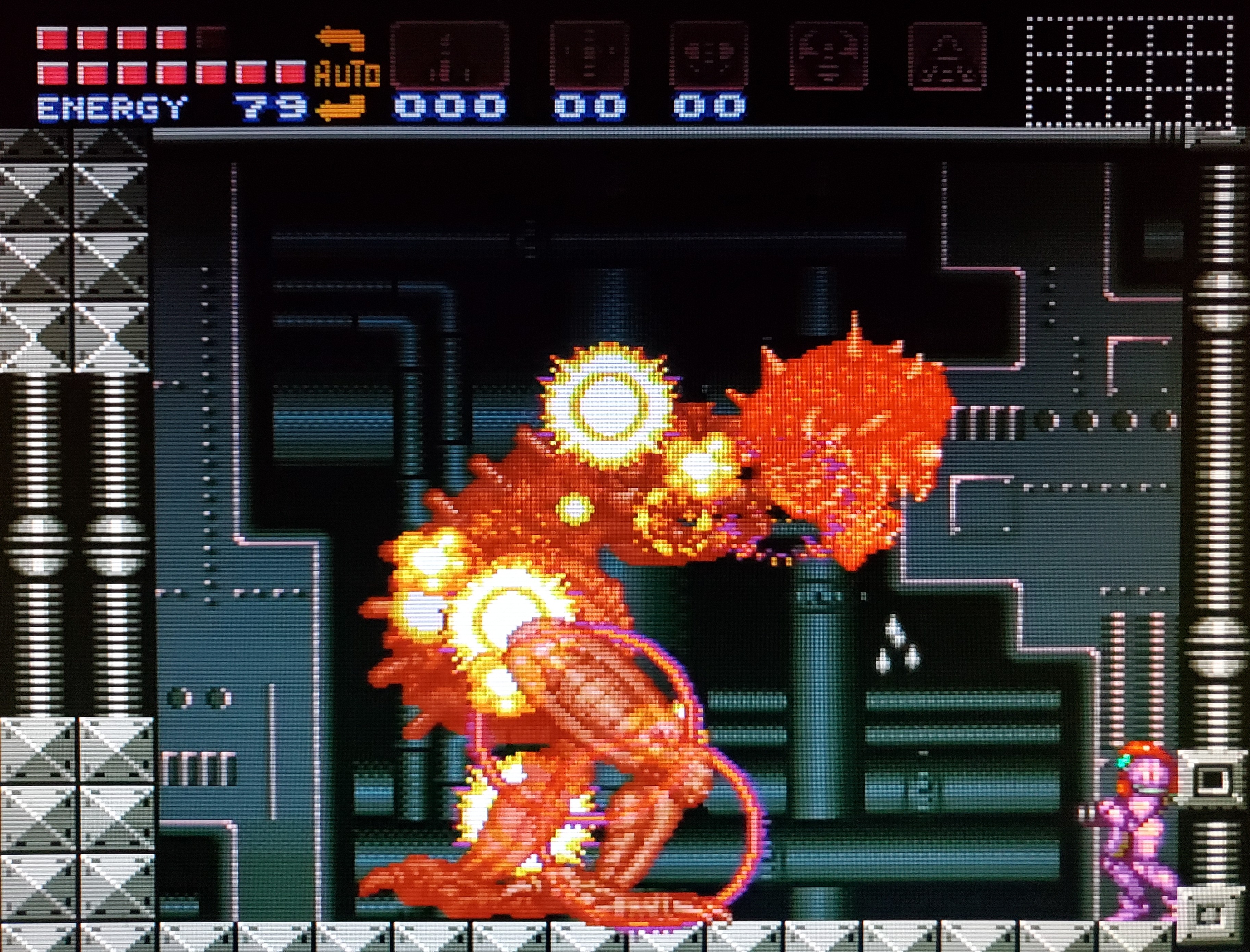
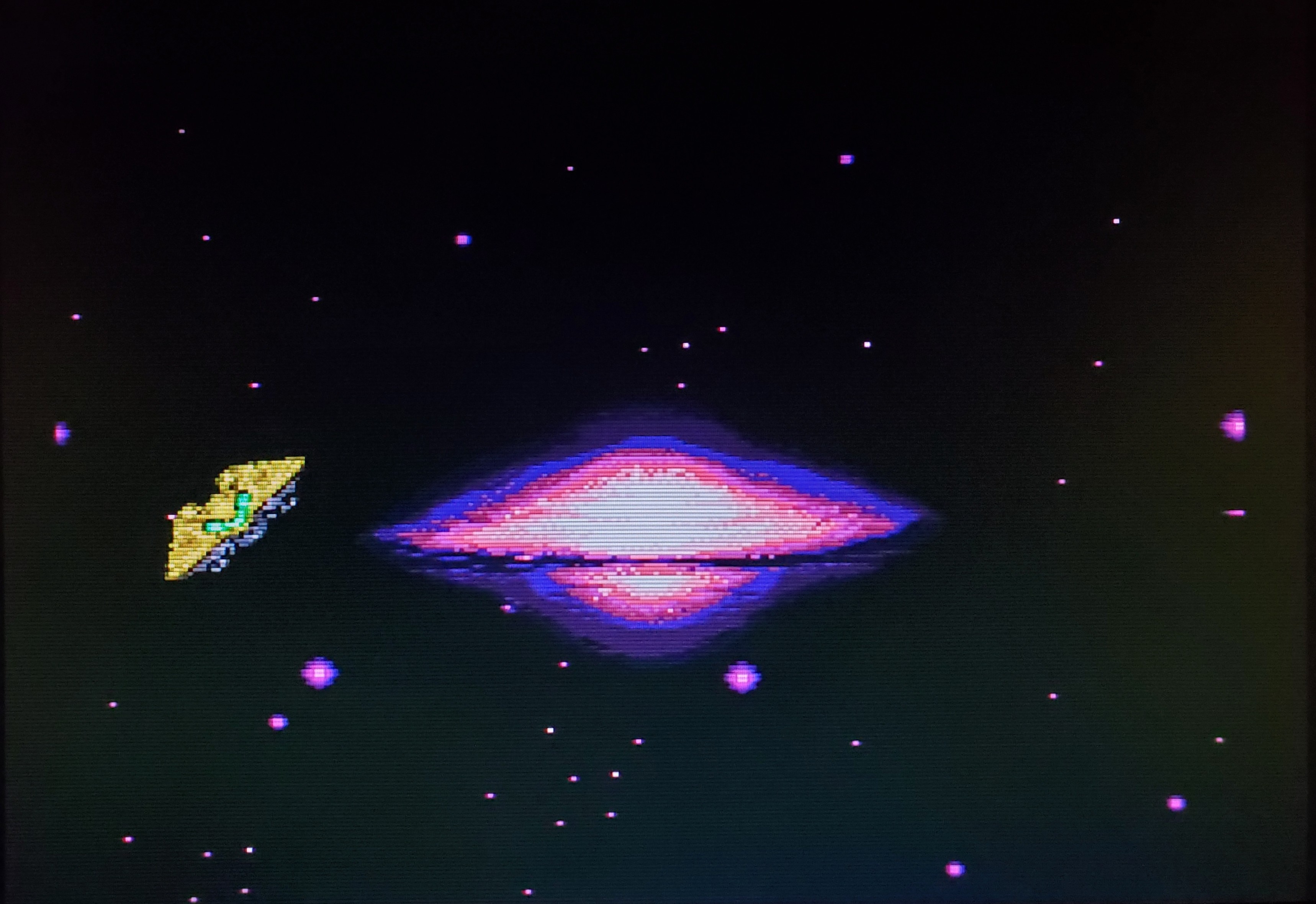
Nintendo set the gaming world alight last week with their announcement that Metroid Dread, the ludicrously delayed sequel to 2002’s Metroid Fusion, will finally see release later this year. Right on time to mark the franchise’s 35th birthday. Anticipation is running high, despite the saga’s rocky track record over the last decade or so. Will Dread be another Other M or Federation Force caliber dud or will it be the glorious return to form patient fans deserve? Or maybe it’ll just be kind of okay? Not everything has to be so extreme, after all. All I know is that it’s inspired me to play more classic Metroid, and that’s good enough for now.
1994’s Super Metroid opens with…corpses. The title screen confronts us with a disquieting view of dead scientists littering the floor around a capsule containing the last surviving member of the energy-draining Metroid species. This sinister first impression certainly did its part to reinforce Metroid’s status as the inveterate oddball in Nintendo’s stable of family-friendly offerings. While never gratuitous or self-consciously “adult,” it is a no-nonsense science fiction epic at heart. There’s nothing overtly cute or Happy Meal-ready about interstellar bounty hunter Samus Aran’s grim struggles to preserve galactic peace.
Samus’ adventures are odd in another way, too. Most Nintendo properties play fast and loose with matters of chronology and continuity. Nothing about Super Mario World, for instance, appears to flow inevitably from Super Mario Bros. 3. Both come across as essentially self-contained princess rescue escapades. Contrast this with Metroid, where every sequel is a direct continuation of its predecessor. Super Metroid is no exception. Having previously prevented the Space Pirates of Planet Zebes from weaponizing the deadly Metroids (Metroid, 1986) and cleansed the Metroid home world SR388 of all but one of the creatures (Metroid II: Return of Samus, 1991), Super Metroid has Samus leaving the lone larval Metroid hatchling in the custody of the Galactic Federation science team at Ceres Station. Soon after departing, she receives an urgent distress call: Ceres Station is under attack! Doubling back, it turns out to be the Space Pirates and Samus fails to stop them from escaping back to Zebes with the hatchling.
Thus, the name Super Metroid is quite appropriate for this installment. Samus is literally heading back to where it all began, looking to finish the job by putting an end to the Space Pirates and the Metroid threat once and for all. She’s once again tasked with hunting down and eliminating Ridley, Kraid, and the other Pirate lieutenants in order to open the gate to the final area. This iteration of Zebes holds plenty of familiar enemies and locations sporting shiny 16-bit makeovers. We even get to revisit a handful of iconic corridors lifted straight out of the first Metroid. The fact that Nintendo was able to pull off reverent nostalgic callbacks to a game that was then a mere eight years old speaks volumes to its landmark status. Not that Super Metroid is a lazy retread. There’s plenty of all-new territory to explore, including watery Maridia and the eerie Wrecked Ship, and returning zones like Brinstar and Norfair have almost entirely fresh layouts.
Perhaps the most striking changes of all are the ones made to Samus herself. The SNES’s six-button controller was leveraged to the utmost here, resulting in a drastically expanded moveset for our armor-clad heroine. One might actually argue that the developers went a tad overboard with this control scheme. On top of being able to jump, shoot, and roll herself into a ball as before, Samus can now angle her arm cannon up and down with the shoulder buttons, perform a dash and invincible super dash, wall jump, swing around with the aid of a grapple beam, unleash a host of special charged attacks with her various weapons, soar through the air (and clear through some walls) via the finicky shinespark maneuver, and more. Heck, I played for years without knowing that the semi-secret Crystal Flash healing technique existed at all. It’s a lot to throw at a new player for sure, but the seemingly boundless attack and movement capabilities of a powered-up Samus are such a blast when mastered. It’s tough to overstate how much Super Metroid upped the ante on its two-button ancestors in this regard.
I similarly can’t praise Super Metroid’s audiovisuals and sense of atmosphere enough. That aura of dread established at the title screen persists through the entire runtime thanks to some of the most lavish pixel art and potent musical ambience ever to grace the platform. The sheer attention to detail is stunning for the period. Different sections of Zebes aren’t simply cobbled together from the same small handful of background tiles repeated room after room. They have their own distinct subdivisions within the greater environment. The lower reaches of Maridia are trackless subterranean ocean, while the upper portions are sandy and dotted with plant life and Space Pirate construction. Though 8-bit abstraction does have its charms, this is a ultimately a far more credible alien world than the NES or Game Boy were capable of conveying. Getting to experience a setting this rich as a character this fun to control is a recipe for borderline indecent amounts of gaming bliss.
In light of all it achieves and its reputation as not only one of the best games of its generation, but of all time, surely not even a die-hard nitpicker like myself can find fault with Super Metroid, right? Oh, boy. Buckle up, Dear Reader, because things are about to get bumpy. You see, underneath all that brooding atmosphere, Super Metroid is rather a light touch. It dispenses completely with the NES game’s anarchic “sink or swim” design philosophy in favor of what amounts to a lightly obfuscated linear progression. Barriers incorporated into the level design require specific upgrades to pass, meaning that although it often seems like any of the dozens of branching paths on your in-game map are viable alternatives, there’s usually only one true next stop on Samus’ guided tour of Zebes. The effect is subtle enough that you might not notice it at all on an initial playthrough. Once you do get wise to this practice, however, the ever-present puppet strings are hard to miss.
By way of counterpoint, you may be inclined to cite the many helpful glitches and so-called sequence breaks discovered by Super Metroid speedrunners. Surely they allow for a bit of that old school freedom? Well, I’m not buying it. These tricks tend to be obscure, tough to execute, and hardly reflect Super Metroid as its makers intended it to be. The original gave you the option to strike out in virtually any direction from the get-go as a feature, not a bug. In other words, the existence of sequence breaks doesn’t make up for there being a sequence to break in the first place. At least not for me.
The irony is that Super Metroid’s genuinely well-meaning goal of making sure its players never become lost or frustrated for too long is fundamentally at odds with the hands-off approach I value most in an adventure game. Consider that older Metroid entries didn’t provide you with an auto-map at all, instead expecting you channel your inner Dungeons & Dragons nerd and reach for the graph paper if you wanted to figure out how all those crazy tunnels connected. I love that. I also love getting lost and confused, dying over and over, lucking onto untelegraphed secrets in nondescript walls, all that jazz! Super Metroid’s creators made a conscious decision to break with these hardcore conventions in the interest of accessibility and a regimented, theme park ride type structure. Hindsight being 20/20, I can’t fault them for that. As much as I’d prefer every game to cater to me specifically, that’s not exactly realistic, is it?
Poet Yevgeny Yevtushenko once declared that he could hear the clatter of surgical tools in Vladimir Nabokov’s prose. That’s where I come down on Super Metroid. It’s an absolute masterpiece of an exploratory platformer. A tightly controlled, painstakingly engineered work of genius. If only it would relax a little from time to time and let me put in some work for a change.

You’re absolutely right that the game’s structure shifts – it’s a more guided experience than Metroid while hiding that fact from the player. I definitely hear people talk about how the sequence breaks elevate the game, and maybe they do, but as you say, they’re not something that was intended.
Still, I love this sort of lock-and-key formula where the keys are your abilities. I think Super Metroid executes it incredibly well (obviously, given how many games copy it), and that it has tippity-top tier production values and atmosphere pushes it to the elite tier. I actually don’t think the moment-to-moment action is amazing, but I feel like that misses the point of the game – the exploration and ambience really are the point. Only Zero Mission grades out higher in the series for me.
LikeLiked by 2 people
I’ll certainly be revisiting it many more times in the future for all those reasons.
LikeLiked by 1 person
Great review! I loved your thoughts about the freedom of older games and how they forced us to take our gameplay to another level by plotting out maps on ye olde graph paper. I miss it and I also don’t miss it because my adult life doesn’t allow me the time to flesh out a game like that anymore. But, if I do want that type of experience, there are plenty of games like that out there that I have yet to try!
LikeLiked by 2 people
Thanks! It can be a little intimidating to write about such a famous. well documented game. I have to sort of take a deep breath, sit down, and give my thoughts without worrying about whether I’m adding anything new to the conversation. It usually works!
LikeLiked by 2 people